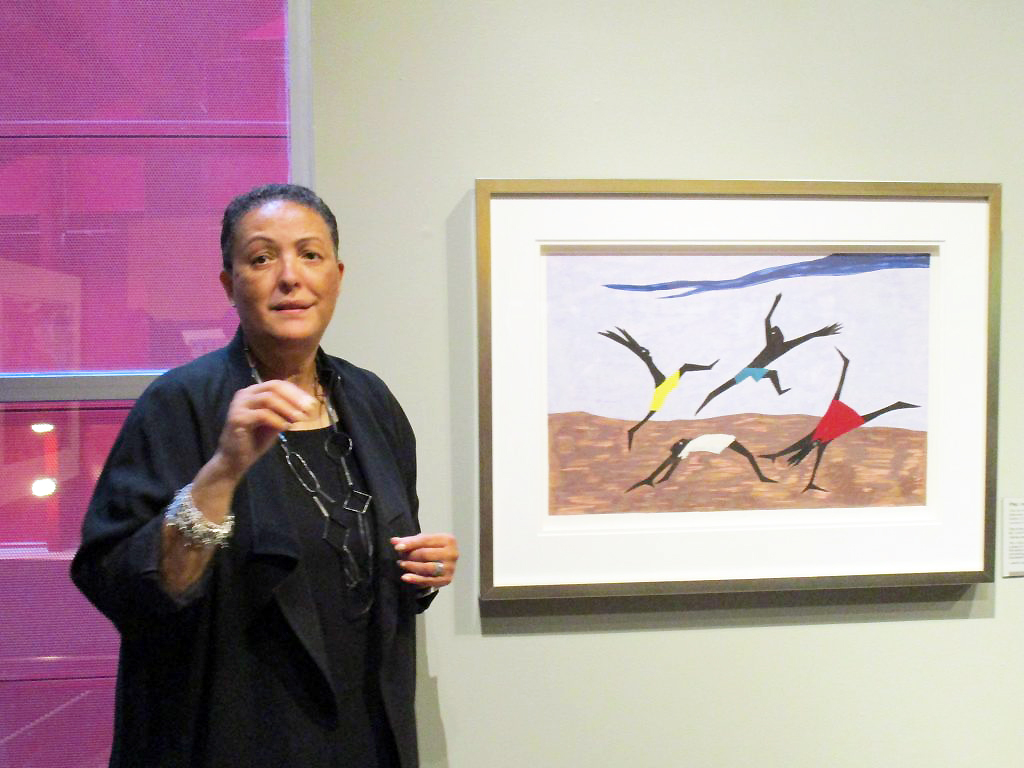
This season marks the 14th year of operation for the Reginald F. Lewis Museum of Maryland African American History & Culture. During its brief tenure, the museum has been marred with rumors of financial turmoil and organizational chaos that have overshadowed its accomplishments.
“This museum occupies prime real estate in the city and the state,” notes Jackie Copeland, who took on the role of executive director at the start of the year, “It is not just about the Reginald F. Lewis museum, it’s also about many other African-American cultural institutions who are not getting the support that they need to be sustainable. Whether that support comes from the state, city, African-American or majority communities, how you put that puzzle together will make a museum sustainable.”
Copeland, an accomplished art historian who brings more than 30 years of experience working in arts institutions to her new position, remains optimistic about her abilities to transform negative perceptions and reignite community engagement.
Modeled after the Smithsonian Institution’s National Museum of African American History and Culture, the Lewis was developed to honor the legacy of business mogul and philanthropist Reginald F. Lewis and to stand as a lasting monument for the archival and exhibition of regional African American histories. The museum has hosted a wide range of exhibitions and programming that chronicle local and national African-American histories, traditions, and contemporary artworks.
Recent exhibitions have included a collection of archival prints by Roland Freeman depicting the life of arabbers on Baltimore streets, an exhibition of more than 70 works by iconic artist Romare Bearden, and photography by Linda Day Clark celebrating the extensive history of quilting traditions in Gee’s Bend, Alabama. The museum also hosts a compelling discussion series entitled Talks and Thoughts, which has presented a broad range of timely issues including the legacy of confederate statues, the Civil Rights origins of Colin Kapernick’s protests, and the lasting impacts of black face and minstrel shows on contemporary culture.
“We want to be a place where the citizens of Baltimore and Maryland can see themselves and their histories,” Copeland continues. “The museum wants to be engaged in community activities, projects that increase children’s literacy, and also fine art exhibits.” We sat down with Copeland to discuss her career and vision to restructure the museum.
How are you hoping to transform the Reginald F. Lewis Museum?
I am the first director with museum experience to lead this museum. I am acutely aware of the finances that it takes to do a deep dive and to grow. My first obligation is to put in place a mechanism that will make this museum sustainable financially. That mechanism will allow me to step back and hire the folks who can go into communities to do the work of real engagement.
Can you describe your vision more specifically?
My vision is to grow the museum, but it takes time. I am really proud of the programs that we do. We are a small staff in a big museum. We call ourselves being flexible and relevant to issues that are relevant to Baltimore, the state, and national communities. Being able to be a place where safe conversations can happen is important for us. We call ourselves “a safe place for unsafe ideas.” We want to continue to have programs that acknowledge figures like Frederick Douglass, Harriet Tubman, and other contemporary artists that are from the region. We have a pulse in the community and align ourselves with movers and shakers who are community oriented.
What plans do you have to create stronger pipelines for community engagement? I am thinking specifically about communities who may not feel comfortable going to museums because historically those institutions have not always been welcoming to people of color.
That is a problem all museums face. I think that we have an advantage because we are a museum for African-American history and culture. My hope is that African Americans can find a place for themselves because their histories are here—that they are not hesitant to come here and feel comfortable here because these are the histories that we and our ancestors have lived. I think the challenge for this museum is to attract visitors of all ages, ethnicities, and genders so that people see that this is a shared history.
If we are showing the history of slavery, for instance, it isn’t just about what happened to African Americans, it is also an issue about majority white communities and their role. The challenge is how we talk about that, how we teach that, and how we engage teachers so that they feel comfortable and know how to discuss it when they bring their students. It is a challenge because, as a culture, we have not grown up always going to the museums, but I want this place to be not just a museum like a high and mighty temple or an ivory tower, but a community space. We kind of balance being a community space with being a museum of culture and being relevant is really important.
Moving forward, what are your hopes for the museum?
My hope is that when folks talk about the creativity and innovation that is happening in the city of Baltimore and speak about cultural institutions and museums like the BMA or the Walters, that they also talk about the Reginald F. Lewis Museum. Each one is distinctive, but we look at ourselves as having a voice for the African-American community. We should be recognized for the importance that we bring and the stories that we tell about the city and the state of Maryland.